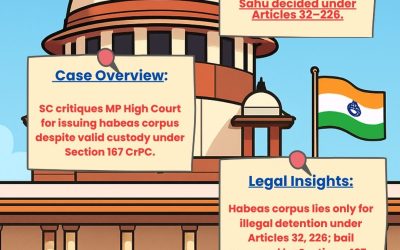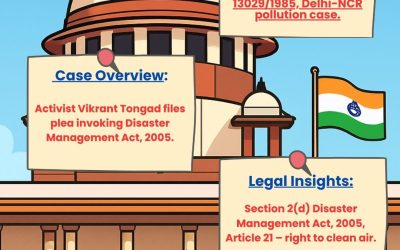
Supreme Court reiterates that trial judges must follow proper High Court-supervised channels before seeking any extension in time-bound cases.
CASE IN NEWS
SC reiterates Trial Judges Communication Rules Reiterated while disapproving direct letters seeking time extensions .
Discover powerful Latin Maxims and simplify complex legal terms in seconds.
CASE NAME
Durgawati @ Priya v. CBI and connected family-dispute matter .
CASE OVERVIEW
The Supreme Court of India again addressed the issue of Trial Judges communicating directly with it for seeking extension of time in cases where the Court has issued a time-bound direction . The bench of Justice JK Maheshwari and Justice K. Vinod Chandran observed that such requests must pass through the proper administrative hierarchy of the High Court .
In the present case, after the Supreme Court had ordered completion of a family-dispute matter within six months, the Trial Judge directly filed an application before the Court seeking more time . This affidavit lacked particulars and bypassed the High Court, prompting serious concern from the bench .
Step into the world of justice withCourtroom Chronicles
KEY ASPECTS
Before examining the pointers, it is important to understand that the Supreme Court expects strict adherence to the judicial chain of command when trial-related extensions are sought . The issue here revolves around procedure, accountability and the role of the High Court’s supervisory structure .
- Trial Judge submitted an extension request directly to the Supreme Court, ignoring procedural hierarchy .
- The affidavit was incomplete and lacked essential factual particulars .
- SC noted that requests should move from Trial Court → District Judge → Portfolio Judge → High Court Registry .
- Earlier judgment in Durgawati @ Priya v. CBI mandated High Courts to oversee time-bound trials through SOPs .
LEGAL INSIGHTS
The following legal provisions frame the authority and responsibility regarding judicial supervision and communication :
- Article 227 of Constitution of India – Supervisory Control of High Courts
-
- Empowers High Courts to supervise subordinate courts .
- All extension requests in time-bound matters must first be examined by the High Court .
- Article 136 – Special Leave Jurisdiction
-
- Allows the Supreme Court to intervene but does not permit bypassing of judicial hierarchy .
- Article 142 – Power of the SC to Issue Binding Directions
-
- SC’s directives on timely completion of trials are binding on subordinate courts and High Courts .
- Procedural Mandate (SC in Durgawati @ Priya v. CBI)
-
- High Courts must frame SOPs for all cases where SC orders expeditious trial .
- Communication to SC must come only through Registrar General or Registrar Judicial .
COURT’S VERDICT
The Supreme Court of India refused to accept the direct communication and directed the filing of a fresh affidavit routed through the Registrar General of the High Court . It reiterated that Trial Judges cannot address the Supreme Court independently and must strictly comply with established hierarchical procedures and High Court-framed SOPs .
The LawGist ensures exam success with quality notes—TPL, Current Affairs, Recent Judgments, and more. Backed by trusted resources and videos, The LawGist is every aspirant’s first choice.
Read also-Constitution of India
Source-Supreme Court of India







